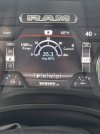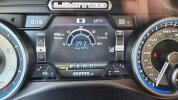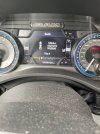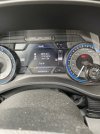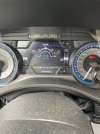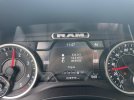That's assuming your final drive, and tire sizes are the same. But yes they are related.
^^^
Yeah, that's why I emphasized the parts I emphasized and put the other parts in parantheses.

A specific truck will have a specific
engine rpm-to-vehicle speed ratio for each gear. That'll be fixed at each rpm for each gear. E.g., 7th gear, 2100rpm=62 mph: or 8th gear, 1750rpm=62mph (<- made up numbers) (And, as I stated, the assumption is that the torque converter is locked up and that the transmission has fully shifted into that gear.)
That's why there's so much debate about tire diameters, final drives, etc. Changing those allows the truck owner to change that engine rpm to vehicle speed ratio.
Older automatics before torque converters had a lock up used to "overdrive". Lots of excess heat, but more power at certain times.
Overdrive did the opposite: it took away power, but gave more speed. It was an extra top gear, useful on those old 3 (and four?) speed transmissions. So, instead of driving at 3,000 rpm at 60mph, (because the transmission was geared low in all three speeds so you could get fast acceleration), you could hit the Overdrive button and do that same 60mph in 3rd at 2,500 rpm. (<- as always, I'm making up my numbers for the example.)
Overdrive was sometimes available in more than just the highest gear. It's a cruising feature, meant for those times when you don't need power.
It started out as a physical gear (planetary) behind the transmission, feeding the prop shaft. When engaged, the prop shaft would spin faster than the transmission input shaft (engine crank). It gave a higher than 1:1 gear ratio. Nowadays, with more gear ratios available in our transmissions, the term "overdrive" has morphed to mean any gear with a ratio higher than 1:1. Meaning, if the engine is rotating slower than the transmission output shaft, it'll be called an "overdrive" gear. These are your cruising gears.
(For clarity, "Underdrive" means the transmission output shafts spins at a speed "under" the input shaft speed. For example, in 1st gear, the engine crank/transmission input may spin 3.5 times for each 1 time the output shaft spins. It's "under driven".)
Here's a good link:
What Is Overdrive Transmission And How It Works? - Engineering Choice
